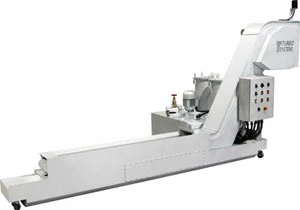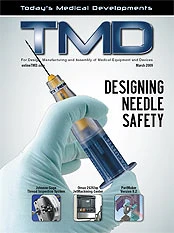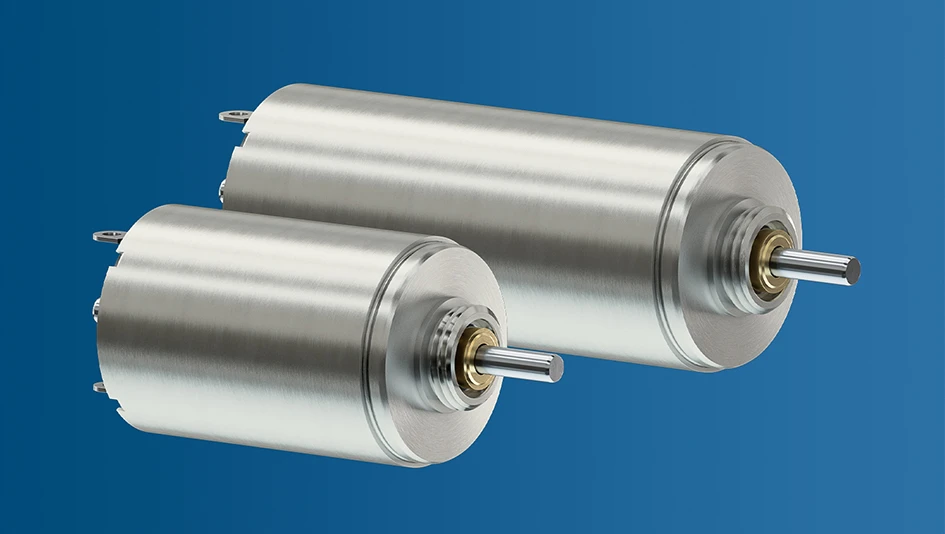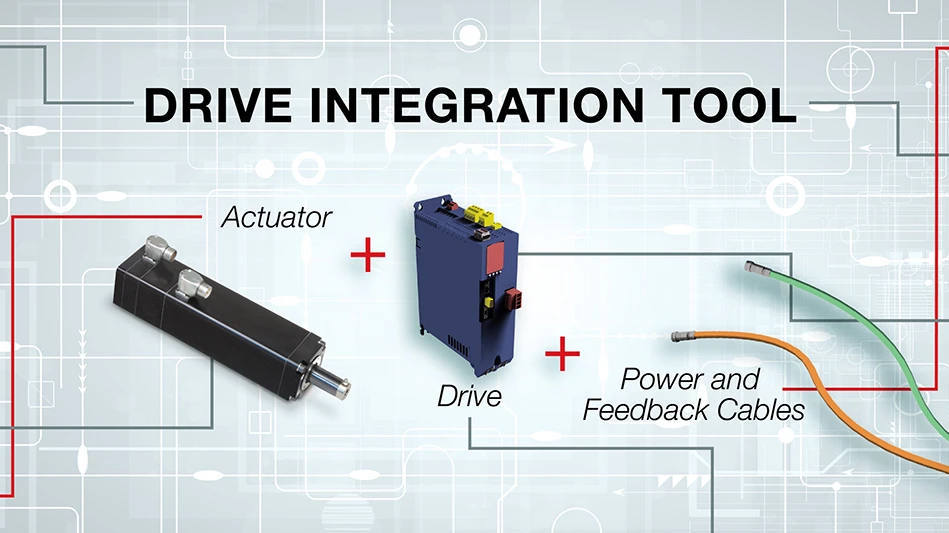
Matching a chip conveyor to your process helps when machining high-precision parts.
Machining high-precision medical parts requires skill, attention to detail and the right tools. And, you need to eliminate any bottlenecks that slow down your manufacturing process.
One potential trouble spot involves the chips that must be moved out of the machining process. Although it may appear that chip removal is a pretty simple task, in fact there are a number of variables that you need to consider when adding a chip conveyor to a new or existing machine tool. Additionally, if your process includes multi-tasking machines that can produce several kinds and sizes of chips, the issue becomes even more complicated.
With this in mind, here are three of the most basic questions you should ask yourself when selecting a chip conveyor:
- Will the chip conveyor be moving mixed materials or will it be dedicated to one specific type of material?
- What is the size and configuration of the material? Fine chips, coarse or stringy, mixed?
- What are the specifications and requirements of the machine tool model that the chip conveyor will serve? Are modifications necessary to accommodate your specific installation?
Your answers to these basic questions will go a long way toward determining the right chip conveyor for your application.
There are several types of chip conveyors available, and each has unique characteristics that must be matched to your specific requirements.
TYPES & APPLICATIONS
No chip conveyor can "do it all." So it helps to understand the capabilities, and limitations, of the various kinds.
Hinge-Belt Chip Conveyors. There are more hinge-belt systems in operation than any other kind. And for good reason: They are versatile, affordable and reliable when used in the proper applications.
These include coarse and stringy ferrous, aluminum, or mixed materials, and operations dedicated to only plastic that have no fine chips. In most cases, therefore, turning machines are good candidates for hinge-belt systems.
They are not the best choice for multitasking machines or other operations that produce fine chips, whether in dedicated or mixed applications. This is because hinge-belt systems do not filter coolant to remove the fine particles that contaminate the fluid and can clog the conveyor, coolant lines and pumps. Using hinge-belt conveyors in these applications, therefore, leads to interrupted workflow and excessive maintenance.
Magnetic Chip Conveyors. These are specially-designed for operations dedicated to working with broken, ferrous materials. Cast iron machining normally produces broken, ferrous chips, so this process is an excellent candidate for magnetic chip conveying. However, stringy, ferrous material that is longer than the magnet spacing is not a good application, as these long strings will short out the magnets.
Because they magnetically-attract all sizes and shapes of ferrous cuttings, these conveyors trap the iron materials and allow the cutting fluids to flow out of the baffle pool below the conveyor track, leaving the metal behind.
Filtering Chip Conveyors. Chip conveyors that also filter and recycle coolant back to the machine tool come in a variety of configurations. These include those using replaceable filter media, permanent, self-cleaning filtering drums made from stainless steel or other materials, and scraper systems that use perforated box filters.
Again, it is critical that you match the filtering chip conveyor to the application.
Some are designed to be efficient only with fine chips while other filtering systems can handle fine, coarse or stringy materials equally well. Certain materials, such as plastics or cast iron, present special challenges to filtration systems, and these must be addressed in the selection process.
Disc Conveyor Systems.For very large machine tools or entire factories, a disc conveyor system eliminates the cost of non-direct labor to dispose of chips. Using segmented pipe sections, combined with chip conveyors and crushers that break up long, stringy chips, the system can be configured to separate various kinds of chips, direct them to individual locations, and provide advanced coolant recovery. These versatile systems can be routed in any direction, above or below grade, are available in a variety of diameters, and are easily reconfigured as production demands change.
OTHER CRITERIA While matching materials and applications to chip conveyor capabilities is critical, there are other important factors:
- Customization: Make sure the supplier has the ability to customize the chip conveyor to properly interface with your specific machine tools and any modifications you may have made to the equipment or installation.
- Frame Strength: The frame of the chip conveyor should be sturdy enough for your application. One size does not fit all. So be sure your supplier offers a number of frame sizes to insure a good match.
- Breadth of Products: Only a chip conveyor manufacturer that offers a complete range of conveyor types can properly identify and provide the best chip conveying system for your unique requirements; otherwise, you may end up with only the best match the supplier can make, not the very best solution.
- Applications Expertise and Technical Support: The only way to realize the best return on your chip conveyor investment is to work with a company that has proven applications expertise, depth of talent, a large population of successful installations, and nationwide service and support provided by the company's own field staff.
Selecting a chip conveyor is not quite as simple as some believe. Making the wrong choice can lead to higher maintenance costs, unnecessary work stoppages and wasted coolant. To maximize productivity, choose chip conveyor systems that best match your machines and the kinds of chips they produce.
Then work with a resource that has the breadth of product, applications expertise, customization capabilities and support to ensure the best return on your investment.
LNS America Inc.
Cincinnati, OH
lnsamerica.com

Explore the March 2009 Issue
Check out more from this issue and find your next story to read.
Latest from Today's Medical Developments
- Auxilium Biotechnologies prints medical devices on the International Space Station
- KYOCERA SGS Precision Tools’ APEX Application Expert
- North American robotics market holds steady in 2024 amid sectoral variability
- Evident’s DSX2000 digital microscope
- Ferrocene becomes first Rust toolchain to achieve IEC 62304 qualification
- Germany expects a major decline in production in 2025
- Learn what you need to comply with CMMC requirements
- VersaBuilt’s CNC automation possibilities





